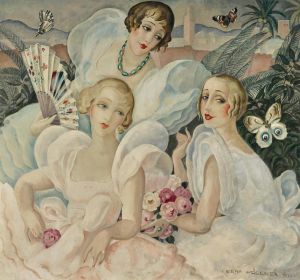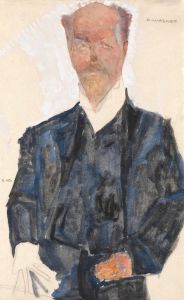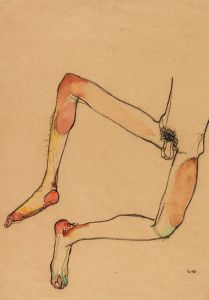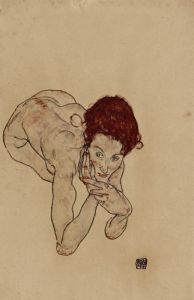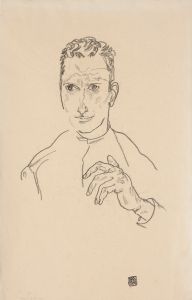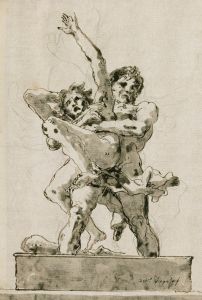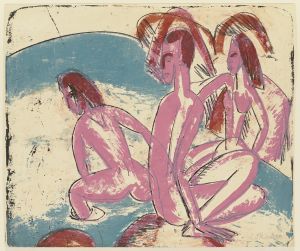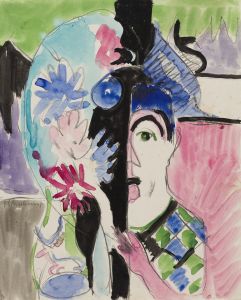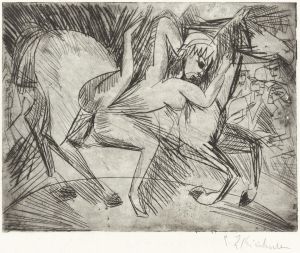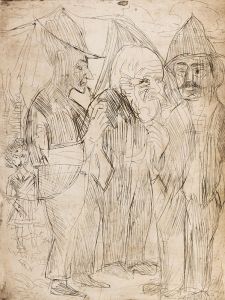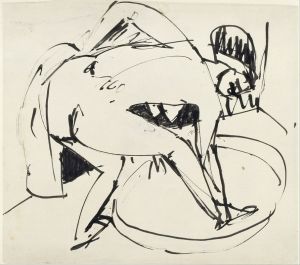
Two Nudes in a Forest
A hand-painted replica of Ernst Ludwig Kirchner’s masterpiece Two Nudes in a Forest, meticulously crafted by professional artists to capture the true essence of the original. Each piece is created with museum-quality canvas and rare mineral pigments, carefully painted by experienced artists with delicate brushstrokes and rich, layered colors to perfectly recreate the texture of the original artwork. Unlike machine-printed reproductions, this hand-painted version brings the painting to life, infused with the artist’s emotions and skill in every stroke. Whether for personal collection or home decoration, it instantly elevates the artistic atmosphere of any space.
Ernst Ludwig Kirchner was a prominent German expressionist painter and one of the founding members of the artist group Die Brücke (The Bridge), which played a crucial role in the development of modern art in the early 20th century. Kirchner's work is characterized by its bold use of color, dynamic compositions, and a focus on the human figure, often exploring themes of modernity, sexuality, and the natural world.
"Two Nudes in a Forest" is one of Kirchner's notable works, reflecting his distinctive style and thematic interests. Painted in 1912, this piece exemplifies Kirchner's fascination with the human form and its integration into the natural environment. The painting depicts two nude female figures situated within a forest setting, a motif that Kirchner frequently revisited throughout his career. This work is a testament to his exploration of the relationship between humanity and nature, a theme that was central to the philosophy of Die Brücke.
The composition of "Two Nudes in a Forest" is marked by its vibrant color palette and expressive brushwork, both of which are hallmarks of Kirchner's style. The figures are rendered with elongated forms and exaggerated poses, emphasizing their connection to the surrounding landscape. The forest is depicted with a sense of movement and vitality, using bold, non-naturalistic colors that convey the emotional intensity of the scene. This approach reflects Kirchner's interest in capturing the psychological and emotional states of his subjects, rather than adhering to realistic representation.
Kirchner's work during this period was heavily influenced by the burgeoning modernist movements in Europe, as well as by non-Western art forms, particularly African and Oceanic art. These influences are evident in the stylized forms and abstracted treatment of the human body in "Two Nudes in a Forest." The painting also reflects the broader cultural and artistic shifts of the time, as artists sought to break away from traditional academic conventions and explore new modes of expression.
The context of Kirchner's life and career during the creation of "Two Nudes in a Forest" is also significant. The early 1910s were a period of intense creativity and experimentation for Kirchner and his contemporaries in Die Brücke. The group was dedicated to forging a new artistic path that bridged the past and the future, drawing inspiration from both historical art forms and the rapidly changing modern world. Kirchner's work from this time is characterized by its boldness and innovation, as he sought to capture the essence of modern life and the complexities of human experience.
"Two Nudes in a Forest" is an important example of Kirchner's contribution to the expressionist movement and his enduring influence on modern art. The painting encapsulates his unique vision and artistic philosophy, highlighting his ability to convey profound emotional depth through color, form, and composition. Today, Kirchner's work is celebrated for its pioneering spirit and its impact on the development of 20th-century art, with "Two Nudes in a Forest" standing as a testament to his artistic legacy.





